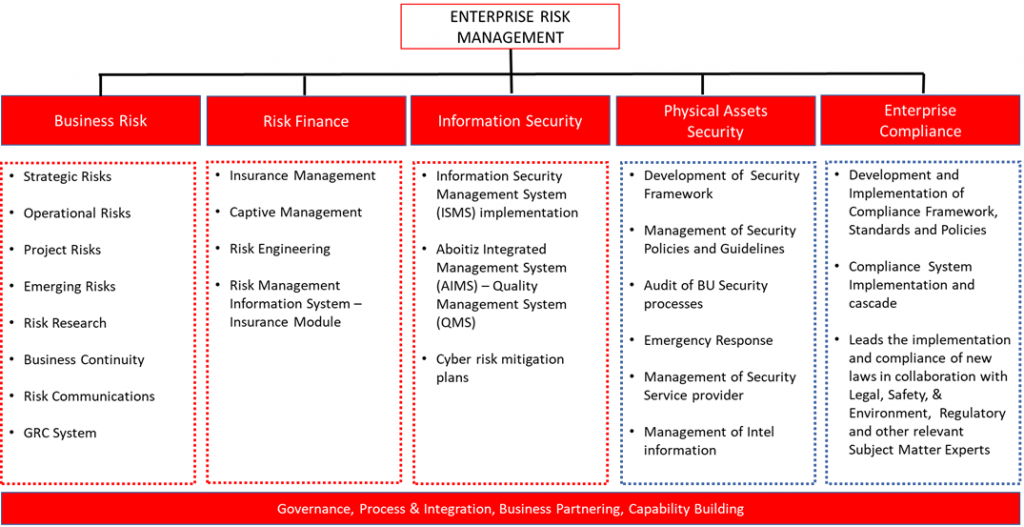Effective risk governance ensures that risk management is effectively and consistently implemented across the Group.

Aboitiz Group Risk Management Structure

- Board of Directors – Over-all responsible for the Group’s Risk Management
- Board Risk and Reputation Management Committee – Oversight of the Enterprise Risk Management
- Risk Management Council (Group ManCom) – Ensures proper implementation of Risk Management Framework and its strategies, policies and key initiatives
- Insurance Management Committee – Review and approval of insurance strategies, programs, policies, procedures and guidelines
- Risk Management Steering Committee – Venue for discussing strategies, initiatives, and programs for implementation to SBUs/BUs
- Strategic Business Unit (SBU)/Business Unit (BU) Risk Management Team – Drives risk management program at their respective units
- AEV Risk Management Team – Develop Groupwide policies, procedures, and guidelines that will serve as a minimum baseline for SBU/BU implementation

At the Corporate Level, these teams are consolidated using a risk-based approach framework. These functional units and their respective deliverables are defined as part of mitigations to the top risks of the Group.
Eventually, the goal is to have an integrated Governance, Risk and Compliance (GRC) framework to achieve efficiency across the Group and to make that the defined governance and initiatives are effective mitigations to address the risks of the organization.


